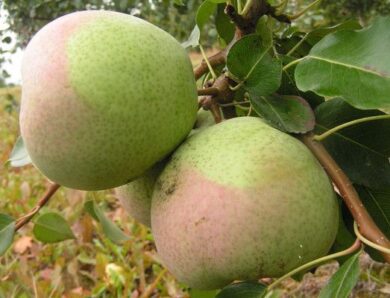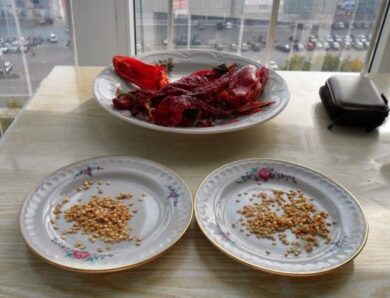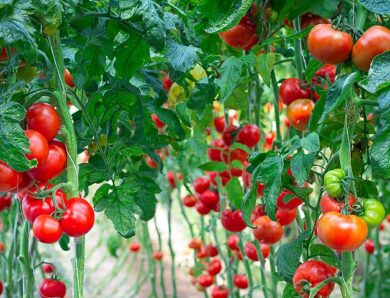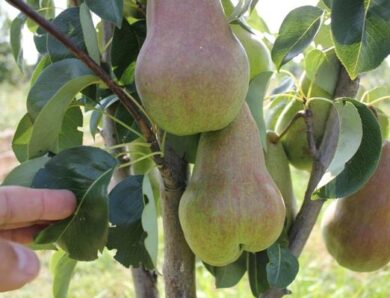Lettuce: landing rules, care and cultivation
Lettuce is the most popular leafy greens. It has been grown all over the world for so long, that no one knows for sure about the place of origin of this vegetable crop. Juicy salad leaves - a real storehouse of vitamins, widely used in cooking as part of dishes, and to decorate the table. Almost all gardeners grow lettuce on their plots, because it is extremely resistant to cold and unpretentious in care, and a short growing season allows you to get several harvests of useful products per season.
description
Lettuce salad, cultivation is described in this article, belongs to the aster family. This is one of the oldest vegetable crops, which was grown in ancient Greece and Rome. Nowadays, lettuce has many varieties and varieties, which are united by one common feature - a lush rosette of delicate curly leaves. The most common for many of us are the leaves of light green color, however, this salad is so diverse, that there are varieties with brown or reddish-purple leaves.
Lettuce is characterized by amazing precocity. Its early varieties form a full-fledged rosette through 30 days from sowing, and if you plant them in greenhouses or under film, then you can enjoy the juicy vitamin leaves in early spring. Only young leaves are used in cooking, they contain many vitamins, salts, trace elements and have a gentle, slightly neutral taste.
If the salad is not removed from the garden in time, then release the socket flowering stems, and the leaves will acquire a bitter taste. Lettuce is eaten mostly fresh as part of dishes or as a side dish. The shelf life of fresh leaves is short, in addition, they are difficult to tolerate prolonged transportation.
Useful Properties Video
In the video you will learn about the useful properties of lettuce.
Useful properties
Lettuce is considered one of the most low-calorie foods (12 kcal / 100 G), but at the same time its greens contain so many nutrients, that this plant can rightly be considered healing.
The chemical composition of lettuce is represented by potassium, phosphorus, magnesium, iron, zinc, copper, selenium and manganese in record quantities. It contains PP vitamins, E, TO, WITH, complete set of B vitamins, especially folic acid in high concentrations, so is simply indispensable product in the diet of pregnant women.
in addition, that lettuce leaves are recommended for obesity and as part of low-calorie diets, the use of this product can have a real healing effect:
- to restore the body after illness and surgery;
- remove excess fluid, remove edema;
- strengthen the nervous system - in folk medicine there are many recipes for nervous overexcitation based on lettuce;
- increase immunity;
- due to the high fiber content to normalize the gastrointestinal tract;
- support the cardiovascular system.
Doctors recommend daily salads for the elderly, patients with hypertension, diabetes, atherosclerosis, as this product can significantly improve their condition. The people lettuce is often used for cooking expectorants, sedatives, anti-TB drugs. For medicinal purposes, it is recommended to drink fresh juice from lettuce. A third of a glass of drink 3 times a day helps get rid of insomnia, lower cholesterol and blood sugar, normalize blood pressure and strengthen the whole body.
growing
It is not difficult to grow Lettuce. It is growing fast, therefore, early varieties should not be fed, easy to tolerate cold, and even spring frosts, can successfully grow a lush green in the open field, and in greenhouses, greenhouses, and on window sills.
When grown at home, you can buy a ready-made soil mixture "Universal" or "Vegetable". But if you plant right in the ground, then the site must first be prepared. Lettuce grows in most soils, rich in humus, therefore at excavation of a site it is necessary to add to the usual soil the deciduous earth or leaf compost, humus, peat and a little sand for hanging drainage properties. When planting medium-ripe varieties, the soil can be enriched with complex mineral fertilizers (Superphosphate).
Lettuce can be grown through seedlings and seeds. The latter method is used more often, as lettuce seeds have practically 100% similarity, and seedlings are very tender and do not tolerate transplanting to a permanent place. To obtain early green lettuce is sown in the soil in early spring (beginning of April), however, sowing can be done throughout the warm season, as well as late autumn, for the winter. For early varieties should be selected sunny areas, for medium-ripe - a little darkened, as summer heat and overheating adversely affect the condition of tender leaves.
For planting lettuce is formed ordinary bed with shallow (up to 2 cm) furrows in the distance 15-20 cm. Optimal planting density 25-30 seeds on 1 running meter of a line. Do not sow the seeds more densely, as all the same it is necessary to thin out. At early sowing it is recommended to cover a bed with a film - this measure will accelerate warming of the soil and emergence of the first sprouts.. In severe weather conditions, lettuce is best placed under a small film greenhouse, which with the advent of heat can be removed.
Care and nutrition
No special tricks in caring for no salad. Everything, what greens need is regular watering and top dressing with microfertilizers. The soil in the garden should always be slightly moist, but by no means wet. You need time to remove weeds and loosen the soil between rows. Weak plants, that did not form a socket, should be deleted, so that they do not rot healthy and developed. For otvazhivaniya snails bed in the aisle is recommended to cover with mulch - this procedure will not only get rid of uninvited guests, but also reduce the frequency of watering.
If you grow early variety of salad, and the soil was sufficiently fertilized at planting, then you no longer need to apply fertilizer. On poor soils, the bed can be fed with humus or manure-based solution. Lettuce responds well to microfertilizers with iodine. The use of mineral fertilizers is not recommended, as lettuce accumulates nitrates very quickly. Apply top dressing in moderation, timely cut the formed sockets, and then the leaves of your lettuce will be tender and not bitter.
Video "How to plant"
You will learn from the video, how to plant and grow lettuce.




